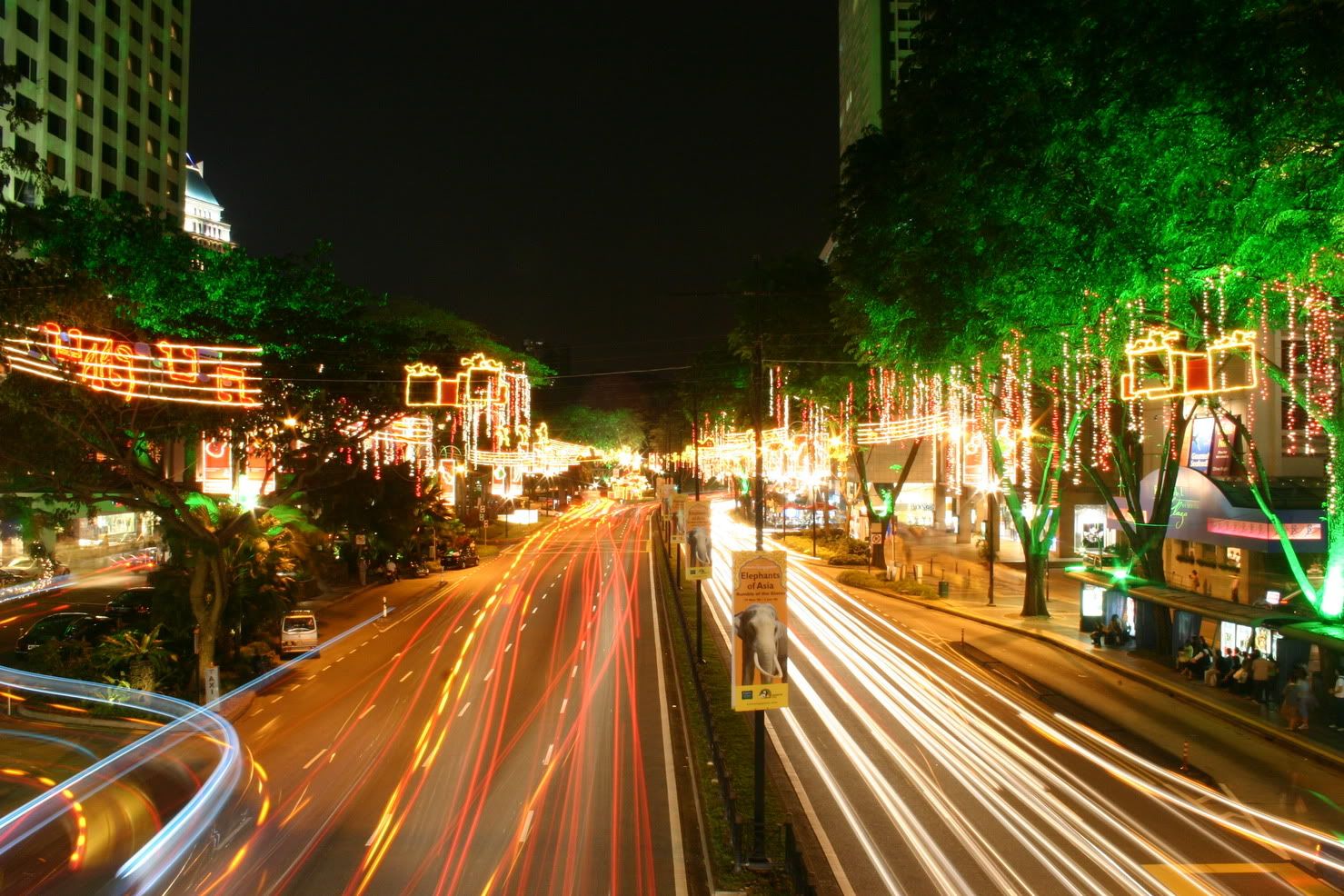One of the most challenging parts of photography is how to take a good picture at night. At night, your shutter speed is slow and using handheld camera can easily create a blur in the image. There are many ways to improve sharpness and minimise the blur image in low light. You can try one or few of the following below:
1. Use tripod or stabilized platform
 Mounting your camera in your tripod can be useful. Not only it can support your camera, but it minimise handshake. In addition to using tripod, a timer is usually used to help to minimise camera shake (Take note that when you press shutton button, you create a slight movement in your camera). If you find it troublesome to carry a tripod around, you can find anything around to support the camera weight.
Mounting your camera in your tripod can be useful. Not only it can support your camera, but it minimise handshake. In addition to using tripod, a timer is usually used to help to minimise camera shake (Take note that when you press shutton button, you create a slight movement in your camera). If you find it troublesome to carry a tripod around, you can find anything around to support the camera weight.2. Use image stabilizer
 Most cameras come with in-built image stabilizers. It comes in handy when you need them in low light condition. If you are taking at night, it is best to turn them on. Remember that an image stabilizer can only help to combat handshake and but not subject movement so if a subject suddenly moves, your final image will show the blur subject.
Most cameras come with in-built image stabilizers. It comes in handy when you need them in low light condition. If you are taking at night, it is best to turn them on. Remember that an image stabilizer can only help to combat handshake and but not subject movement so if a subject suddenly moves, your final image will show the blur subject.3. Use high ISO
Using a high ISO at night will help you to get more speed so that you can freeze the subject. However, pumping too high ISO will result in undesirable noise appearing in the pictures. Depending on the camera model, try to pump your ISO till the point where noise starts to appear and use it to shoot.
4. Use small aperture
 Using a small aperture also helps by allowing more light into the sensor. A small aperture has big hole and thus it permits you to use a faster shutter speed to combat handshake as well as freeze the subject.
Using a small aperture also helps by allowing more light into the sensor. A small aperture has big hole and thus it permits you to use a faster shutter speed to combat handshake as well as freeze the subject.5. Use slow shutter speed
At night it can be sometimes difficult to achieve a shutter speed that is fast enough to match the recommended rule which is 1/focal length. As such if your camera has an image stabilizer ability and you can achieve a shutter speed of 1/30, it should be good enough to take a sharp picture without using flash. But if you are in an area with poorly lit light, you can try to use a slow shutter speed. For example, the below shot was taken when the area has not enough light and there is a lot car. You can create a light trails by using a long shutter speed. To do this, you will need a tripod or a stable platform.

6. Use flash
If flash is permitted in an area you are in, then use flash to light up your subject. Take note that flash has a range limit and you should check your manual about the flash range. If you are using a external flash, you can try other flash types such as 2nd synchronization or stroboscopic flash to do creative light shooting. 2nd synchronization flash works when the flash is fired just before the shutter is close and stroboscopic flash works by firing multiple flash at specific interval.
7. Move to area with more ambient light
If you find that there is a good lighting condition nearby, then you should try to move your subject to that area and take them.
8. Hold your camera steady
It is not easy to take a camera handheld at night. Even though there is a recommended rule of 1/focal length, but it is hard to achieve it if you are in a very dark area. This “hold your camera steady” basically means holding your camera in two hands, is only useful when you can achieve quite a reasonable shutter speed of 1/30 second.
9. Use self timer or cable release
If you have either a self timer or a cable release, you should be able to take a picture without you pressing the shutter button on your camera. This will help to minimize camera shake and it is best used when you mount your camera on your tripod or any stabilized platform that can support your camera.

0 comments:
Post a Comment